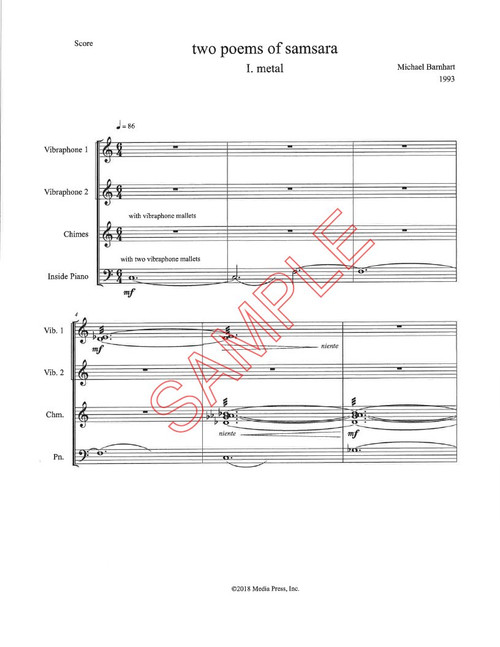Includes score.
This quartet for harmonica and percussive text emerged in 1994 but the experiments it relies upon began in my noisy childhood. At some point early on I realized that I could pass the time on long walks or when running by singing/speaking/breathing rhythms along with my footfalls. I devised a type of rhythmic circular breathing, attempting to have a natural-feeling mixture of inhales and exhales. By repeating a rhythm and switching all inhales for exhales, one could make up two-measure patterns that could be performed indefinitely without running out of breath. I received some toy harmonicas as presents and also discovered that I could speak through them using their reeds in place of my vocal chords like a sort of low-rent vocoder effect. Ten years later after studying Meredith Monk’s Book of Days and also experiencing “big music for small instruments” (kalimbas) created by composers Jan Beukes and Alonzo Alexander, I developed a desire to find a similar vehicle for my music. Upon the untimely death of my stepmother, Wendy, I inherited her excellent harmonica collection. To expand the harmonies on these diatonic instruments I began experimenting with layering harmonicas of different keys using a 4-track tape recorder; the sonic materials for the piece began to appear. The original lyrics were chosen for the percussive sound of the words and the glimpses of anxiety and despair that they contain.
Print size: Letter (8.5 x 11")
Review from Percussive Notes (2021):
Breathing Drum
Michael Barnhart
If you and your quartet are looking for something completely different than anything else on your program, you may be interested in “Breathing Drum” by Michael Barnhart. This piece is written for instruments not commonly found in our repertoire, including harmonicas, harps, and circular pitch pipe. Teeming with vocalizations and other unique sounds, this three-movement work is ideal for younger undergraduate students as a way to introduce them to chamber music.
The piece comes with an engraved score as well as a copy of the original manuscript. While it may be more difficult to read, Barnhart encourages the group to perform from the hand-written score to avoid excessive page turns. The composer also details in the performance notes that all players should be seated in close proximity to a table while performing, with a soft light emanating from the center. This adds a dramatic and theatrical element to the performance. In addition to the instrumentation, the piece requires four microphones and amplified speakers, as many of the sounds throughout involve whispering and other intimate noises.
The first movement, “Speak,” focuses on unison gestures and text spoken through the harmonicas into the microphones. In contrast, the second movement, “Whisper,” begins to explore hocketed rhythmic figures and part-designated text. “Reed,” the work’s final movement, takes each of these concepts a step further by avoiding any unison text or gestures and focusing on rhythmic interplay, articulation, and pitch content. While challenging in many respects, “Breathing Drum” is a worthwhile investment for the performer and a guaranteed crowd-pleaser!
—Danielle Moreau
Demo:







